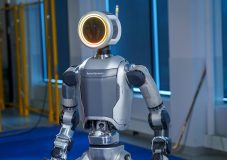What’s the State of Responsible IoT in 2018? After years of concerning news about connected devices that were hacked, bricked, or used to spy on users, a collection of essays by the experts in the ThingsCon network explores where we stand in terms of creating IoT devices that are responsibly made and respect user rights.
(Learn more about the report or read it on Medium.)
Since the first installment of this annual report came out the first time in 2017, a lot has happened: Responsibility and ethics in tech have begun to enter mainstream conversations, and these conversations are having an effect. The media, tech companies, and policy makers all are rethinking the effect of technology on society.
But the lines between Internet of Things (IoT), AI and machine learning (ML), and algorithmic decision-making are increasingly blurry. Designers of connected devices have their jobs cut out for themselves. It is essential to consider the implications and to make sure that all the new data-driven systems we see deployed across our physical and digital environments work well—not just for the users but for all who are impacted.
“Let’s be clear: none of our instincts will guide us in our approach to the next normal.” — Adam Greenfield, Radical Technologies
So what are the ThingsCon experts proposing? Do we need to regulate IoT globally from a fundamental human rights perspective as Brazilian policy experts Ronaldo Lemos and Eduardo Magrani suggest? A first step would be for IoT designers not to treat users like infants, says Gaia Scagnetti of NYC’s Pratt Institute, as that is both paternalistic and scratches the very basis of our free will. Researcher Holly Robbins of the Dutch Just Things Foundation explores the Transparent Charging Station, a prototype for radical transparency of how algorithms work: Maybe this offers a path forward to show users how they interact with complex technological systems and vice versa.
This doesn’t sound radical enough? How about a fundamental rethinking of how we design with connected products, as academics Iohanna Nicenboim, Elisa Giaccardi and James Pierce advocate, by considering the things themselves as actors in their own right? Activist and researcher Maya Ganesh suggests we consider how we map and design IoT systems: The map itself reveals the values and social positions of the map-maker, so we should ask: What does the map-maker/designer consider worth mapping, and what do they leave out? It just so might give us a clue as to who is the customer and who is the product.
Dutch designer Iskander Smit wonders if we can (and should) imbue connected products with democratic values.
Elsewhere in the report, some experts offer more hands-on and concrete advice. British entrepreneur and technologist Laura James demands connected that we can rely on—especially in the case of infrastructure—and where the benefits outweigh potential damages. She points out that the challenges aren’t always linked to the tech—they are often organizational or have to do with faulty business models. Ethicist and writer Luca van der Heide sees an opportunity to shift our design goals for connected products from invisible to transparent and from invasive to inclusive.
Writing from a wide-angle lens spanning researchers and technologists from Asia, North America and Africa, Seyram Avle, David Li & Silvia Lindtner see co-designing with people in the field as a remedy for tech-solutionism.
And a ThingsCon project I lead myself focuses on a consumer trustmark to help users make better informed decisions. The Trustable Tech mark evaluates connected devices along five dimensions: Security, transparency, openness, privacy & data practices, as well as stability (in the sense of robustness and longevity). The Mozilla Foundation supports this through a fellowship.
As can be gathered from the wide range of these examples, many questions still remain to be solved on our shared journey from the Internet of Shit towards a healthy, responsible, and rights-respecting Internet of Things. But across the board we see progress in long strides, and more and better approaches to tackle the tech challenges of the 21st century.









